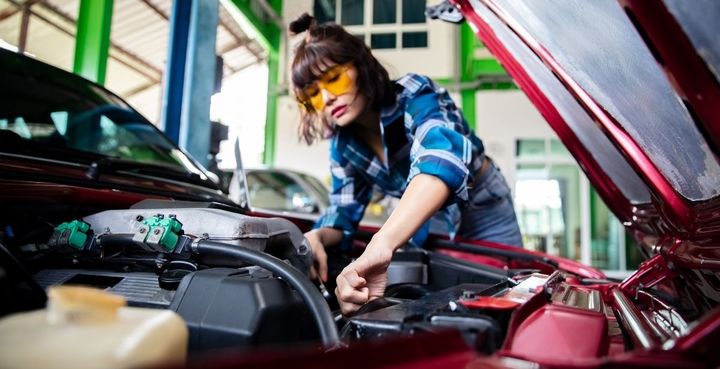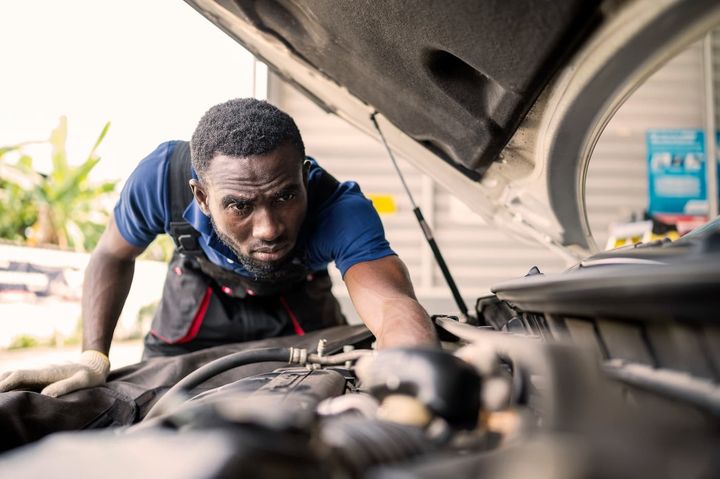


The auto start/stop system, also known as the idle stop-and-go or stop-start system, is a fuel-saving technology that automatically shuts off the engine when the vehicle comes to a complete stop, such as at a red light or in heavy traffic. This system is designed to reduce fuel consumption and emissions by preventing unnecessary idling. When the driver releases the brake pedal or engages the clutch (in manual transmission vehicles), the engine automatically restarts. While this feature can provide significant fuel savings, there are various reasons why it may not function as intended

Before we dive into the potential problems, let's briefly discuss how the auto start/stop system works. This system is designed to automatically shut off the engine when the vehicle comes to a complete stop, such as at a red light or in heavy traffic. When the driver releases the brake pedal or engages the clutch (in manual transmission vehicles), the engine automatically restarts. This process helps reduce fuel consumption and emissions by preventing the engine from idling unnecessarily.
While this feature is intended to be seamless and convenient, various factors can interfere with its proper operation. Let's explore the most common causes and solutions.
The most common reasons why the auto start/stop system may not be working properly are:
| Cause | Description |
|---|---|
| Battery Issues | The system relies heavily on the battery to quickly restart the engine. A weak, old, or faulty battery may not have enough power to restart the engine smoothly. Poor battery connections can also disrupt the system's operation. |
| Electrical Problems | The start-stop system is connected to various electrical components like the alternator, starter motor, wiring, and fuses. Any issues with these components can prevent the system from functioning correctly. |
| Engine Temperature | The system may not activate if the engine is too hot or too cold, as it requires a specific temperature range to operate. This can be problematic in extreme weather conditions. |
| Driver Behavior | If the driver manually disables the system, it will not function until reactivated. Some drivers may find the automatic shutoff and restart disconcerting and choose to disable it. |
| Mechanical Issues | Problems with the fuel system, exhaust system, or other engine components can impact the start-stop system's performance. |
To identify the specific issue, follow these steps:
Check the battery condition and connections. Use a multimeter to test the battery voltage and inspect the terminals for corrosion or loose connections.
Scan for diagnostic trouble codes related to the start-stop system, alternator, or starter motor using an OBD-II scanner.
Observe if the system works better in certain temperature ranges, indicating an engine temperature-related issue.
Ensure the system is enabled in the vehicle settings and not manually disabled by the driver.
Listen for unusual noises or vibrations from the engine, which may indicate mechanical problems.

Depending on the identified cause, repair procedures may include:
| Repair | Description |
|---|---|
| Battery Replacement | If the battery is old or faulty, replace it with a new one compatible with the start-stop system. |
| Electrical Repairs | Replace any damaged wiring, fuses, or electrical components related to the start-stop system. |
| Engine Repairs | Address any mechanical issues with the fuel system, exhaust, or other engine components that may be affecting the system's operation. |
| Software Updates | In some cases, a software update from the manufacturer may be required to resolve any programming issues with the start-stop system. |
Always follow the manufacturer's recommended procedures and safety precautions when performing repairs.
To prevent future issues with the auto start/stop system:
Follow the recommended battery replacement schedule and maintain proper battery connections.
Regularly inspect and replace any worn electrical components, such as the alternator or starter motor.
Keep up with scheduled maintenance to ensure the engine and related systems are in good working condition.
Use the system as intended by the manufacturer, and avoid manually disabling it unless necessary.
The cost of repairs can vary depending on the specific issue and the make and model of the vehicle.
| Repair Type | Estimated Cost Range |
|---|---|
| Battery Replacement | $100 - $300 |
| Electrical Component Repairs | Several hundred dollars or more |
| Engine Work | Several hundred dollars or more |
Regular maintenance and timely repairs can help prevent more costly issues down the line.
The auto start/stop system is a valuable feature designed to improve fuel efficiency and reduce emissions, but it can be frustrating when it doesn't work as intended. By understanding the common causes, troubleshooting steps, repair procedures, and preventive measures, you can better address any issues that may arise with this system.
Remember, regular maintenance and timely repairs are key to keeping your vehicle in top condition and ensuring that all its features, including the auto start/stop system, function properly. If you're ever unsure about the cause of a problem or the appropriate repair procedure, it's always best to consult with a professional automotive technician.
By following the guidelines and recommendations outlined in this article, you can keep your auto start/stop system running smoothly and enjoy the benefits of improved fuel efficiency and reduced emissions for years to come.’
The auto start/stop system is designed to improve fuel efficiency and reduce emissions by automatically shutting off the engine when the vehicle is stopped and restarting it when the driver is ready to move again.
The system shuts off the engine when the vehicle comes to a complete stop, and automatically restarts it when the driver releases the brake pedal or engages the clutch in manual transmission vehicles.
Common causes include battery issues, electrical problems, engine temperature extremes, driver behavior (manually disabling the system), and mechanical issues with components like the fuel or exhaust system.
Check the battery condition and connections, scan for diagnostic trouble codes, observe if the system works better in certain temperatures, ensure it's enabled in the vehicle settings, and listen for unusual noises from the engine.
Repairs may include battery replacement, electrical component repairs or replacements, engine repairs, or software updates from the manufacturer.
Follow recommended battery replacement schedules, maintain electrical components, keep up with scheduled maintenance, and use the system as intended by the manufacturer.
Costs can range from $100-$300 for a battery replacement to several hundred dollars or more for electrical component repairs or engine work.
While it's generally not recommended, some vehicles may allow the system to be permanently disabled through the vehicle settings or by a professional mechanic.
The system may not activate if the engine is too hot or too cold, as it requires a specific temperature range to operate properly.
No, the auto start/stop system is typically found on newer vehicles as a fuel-saving feature, but it's not available on all makes and models.

Sarah isn't your average gearhead. With a double major in Mechanical Engineering and Automotive Technology, she dived straight into the world of car repair. After 15 years of turning wrenches at dealerships and independent shops, Sarah joined MICDOT to share her expertise and passion for making cars run like new. Her in-depth knowledge and knack for explaining complex issues in simple terms make her a valuable asset to our team.











